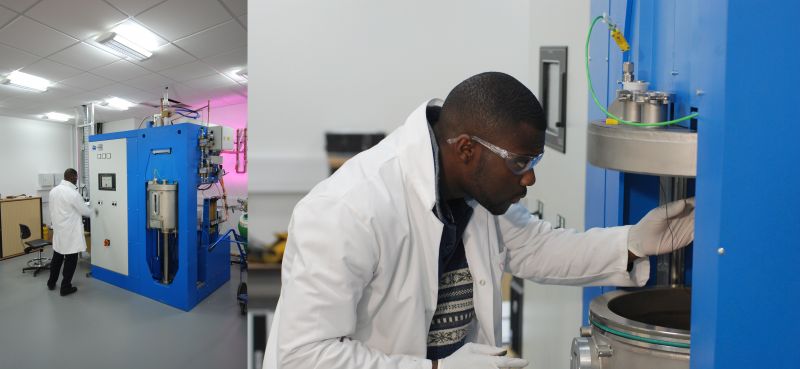Spark Plasma Sintering (SPS)
Energy efficient, high speed powder consolidation process
Spark Plasma Sintering (SPS) works by the rapid heating of electrically conductive dies by pulsed DC electric currents in a vacuum or inert environment. The equipment can achieve heating rates of over 1000°C /min up to 2500°C, this means it is possible to sinter a huge range of materials to high density in a few minutes. The rapid heating rate combined with high pressure (up to ~1GPa) opens up a new processing window and the possibility of producing new materials with microstructures and properties that cannot be achieved using conventional sintering techniques.
SPS has attracted attention due to its ability to; fabricate nanostructured ceramics, produce textured microstructures in a single processing step, enable the joining of dissimilar materials, and preserve metastable microstructures. As well as being able to sinter structural and functional ceramic materials, we are also able to prepare metallic and composite samples. SPS is a high throughput technique, which makes it ideal for quickly exploring new materials and an energy efficient route for the mass production of materials.
Nanoforce provides small volume niche samples for academic research, as well as high volume samples such as sputtering targets for industrial applications.
Key features of SPS:
- Normal sample range: 20-60 mm in diameter, extreme sample range: 5-78 mm in diameter
- Fully density and controlled porosity
- Pre-forming and binders not necessary
- Retains nanometric particle structure
- Minimal grain growth
Associated equipment:
- Hydraulic press
- High Temperature Furnace
- High Speed Milling Machine
- Polishing and Grinding Machine
- Table Top Cutting Machine


